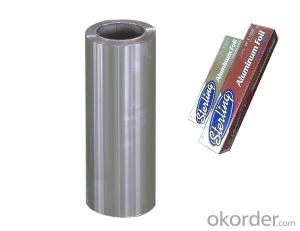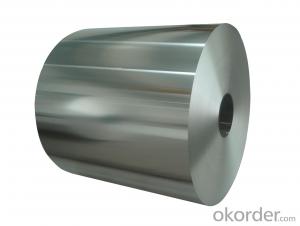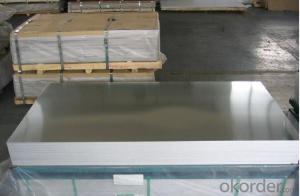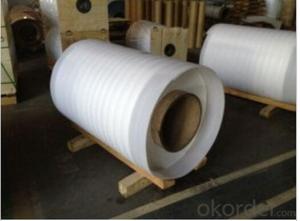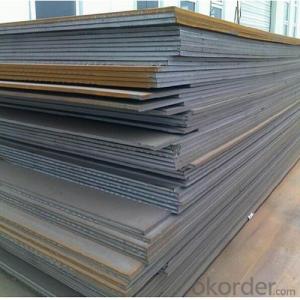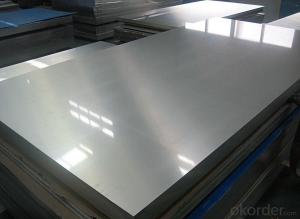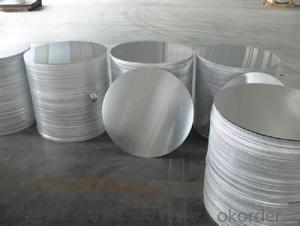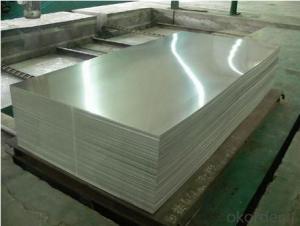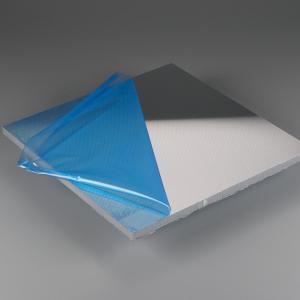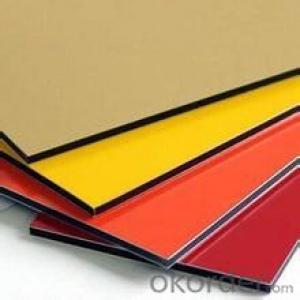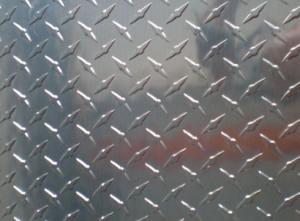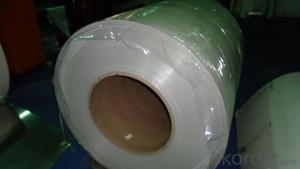Translucent Aluminum Oxide Sheets for Baking, Cooking in Restaurants and Hotels
- Loading Port:
- Shanghai
- Payment Terms:
- TT OR LC
- Min Order Qty:
- 1 m.t
- Supply Capability:
- 5000 m.t/month
OKorder Service Pledge
OKorder Financial Service
You Might Also Like
Our aluminium foil are mainly used for food packing.
Below are our best sellers specification for your reference.
9mic*29/30cm*75m
10mic*29cm*75m
10mic*29cm*150m
10.5mic*29cm*100m
| Alloy | 8011 |
| Temper | O |
| Thickness | 0.0065-0.02 mm / 6.5-20 micron |
| Width | 120 / 290 / 300 / 450 mm |
| Length | 7.62-200 meters |
According to different market, we offer below different packing ways.
Sell to restaurants or hotel: Each roll is wrapped with bubble film, 4/6 rolls per outer carton.
Sell to shops, stores or supermarkets: Each roll is wrapped with BOPP film, 24/36 rolls per outer carton. Or each roll is packed with color paper box with metal cutter, 6/12/24/38 rolls per outer carton. Outer carton has white and brown color.
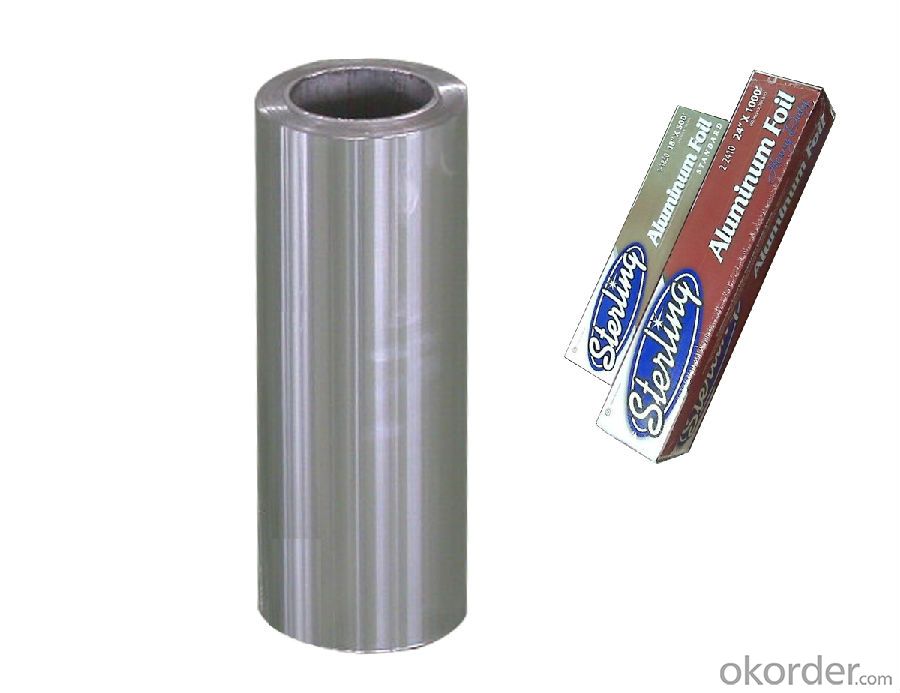
- Q: Can aluminum sheets be used for solar panels?
- Solar panels can indeed utilize aluminum sheets. Aluminum is widely employed in the manufacturing of solar panels due to its exceptional properties. Its lightweight nature, durability, and resistance to corrosion make it well-suited for enduring diverse weather conditions. Moreover, aluminum boasts excellent electrical conductivity, a crucial element for efficient energy generation in solar panels. By incorporating aluminum sheets, solar panels can guarantee longevity and optimal performance, all while diminishing the panels' overall weight and cost.
- Q: What is the most effective technique for applying a coating to aluminum sheets?
- <p>The best method for coating aluminum sheets depends on the desired application and properties of the coating. Common methods include anodizing, which provides a protective oxide layer, powder coating for a durable finish, and electroplating for enhanced corrosion resistance. For decorative purposes, methods like painting or vacuum deposition can be used. Each method has its advantages and is chosen based on factors such as cost, durability, and aesthetic requirements.</p>
- Q: im making a presentation and once i read through it it feels like its leading up to something but then goes flat. any ideas. my project ' steel cars compared to aluminium'
- Aluminium is extremely flammable. We use it in thermite welding and as solid rocket fuel. The Emperor Napoleon carried* an aluminium fork while the lower royalty had to make do with gold forks. *In those days people carried their table wear around with them same as we carry our car keys.
- Q: Can aluminum sheets be hydroformed?
- Yes, aluminum sheets can be hydroformed.
- Q: What are the different methods of surface coating for aluminum sheets?
- There are several methods of surface coating for aluminum sheets, including anodizing, powder coating, painting, and laminating.
- Q: Can aluminum sheet be used for reflective surfaces?
- Yes, aluminum sheet can be used for reflective surfaces.
- Q: What are the different methods of forming aluminum sheet?
- There are several methods of forming aluminum sheet, including rolling, extrusion, stamping, and spinning.
- Q: What kind of aluminum sheet can be bent with five millimeters?
- The aluminum plate can be bent five milimeter too much, if only bending words and aluminum quality has little relationship.First of all, the state is the most important, the state is divided into hard, semi hard, soft (usually soft called O state)The bending effect of the whole hard is not too far (the aluminum plate is H18, H19, H38 and so on are all hard)Semi hard aluminum sheets can basically be bent (H24, that is, semi hard)O bending is certainly not a problem, but because of too soft, basically with this state to bend lessSecond, you have to choose pure aluminum or alloy aluminum?Pure aluminum hardness is not very good, with 1100, 1050, 1060 and so on can be recommended 1100 H26Alloy aluminum hardness is better, can use 3003, 3005, 5052 and other semi hard state can be.Specific recommendations were then determined by 6061, 2024, 7075 if the hardness is too high, especially for the T6 state is more, should not bend, unless you're heating and folding the difference between aluminum and aluminum is poor oxidation resistance, tolerance, surface effect, crystal accuracy and the uniform stability of a difference, not only the bending effect difference.If the aluminum surface paint it quality do not too good, good is a waste, it is recommended to use 3003-H26, 3005H24 or 5052H34, the price of twenty pieces of it, made up to more than forty yuan per kilogram
- Q: I need to make an aluminum cylinder out of 1/8 6061 plate and tube. I don't have a TIG setup and was considering using Bernzomatic aluminum soldering rods. The cylinder will be pressurized from 20-60 psi. Assuming a clean job, is this pressure ok? How much pressure can the joint take? Also, although the solder does not need flux, should i use it anyway?
- Whether that weld will be OK depends on the diameter of the cylinder. The force on the weld will be equal to the operating pressure time the radius of the cylinder, with the wall opposite the weld have an equal force. Divide that force by the thickness of the weld to figure the stress. You want to have a safety factor of about 3. As the Bernzomatic has either a brass or aluminum head, which would melt at the temperatures which are required for true welding (melting metals so that they flow together), you will be performing brazing with a Bernzomatic. I cannot comment on the strength of the brazing bond. The thickness of the brazing metal deposit depends on the strength of the brazing alloy, which I also cannot comment on. 6061 will melt at 1206°, which you will not approach with the Bernzo kit. A blowout of a metal cylinder at 60 psi could be pretty ugly. I suggest that you befriend someone who has a TIG welder and get their help. A properly welded 1/8 thick cylinder could handle about 660 psi with no problem. If you create a lap joint, using an outer strip of aluminum, and then band your cylinder with stainless steel hose clamps, you will be relying upon the brazing only to provide a gas seal. The strength would come from the hose clamps. You still need to do some calculation on forces involved. A 1/2 wide stainless hose clamp will probably hold back about 240 lb. of force with a comfortable margin of safety.
- Q: Are the aluminum sheets suitable for manufacturing automotive chassis?
- Indeed, automotive chassis manufacturing can make use of aluminum sheets. Aluminum, being a lightweight and durable material, is an excellent option for constructing automotive chassis. Its qualities make it an ideal choice, as it offers various advantages such as enhanced fuel efficiency, improved handling, and increased structural rigidity. Moreover, aluminum possesses the ability to absorb and disperse impact energy effectively, thereby enhancing passenger safety. Additionally, its resistance to corrosion contributes to the longevity of the chassis. Ultimately, employing aluminum sheets in the manufacturing of automotive chassis yields numerous benefits and is a fitting choice for this purpose.
Send your message to us
Translucent Aluminum Oxide Sheets for Baking, Cooking in Restaurants and Hotels
- Loading Port:
- Shanghai
- Payment Terms:
- TT OR LC
- Min Order Qty:
- 1 m.t
- Supply Capability:
- 5000 m.t/month
OKorder Service Pledge
OKorder Financial Service
Similar products
Hot products
Hot Searches
Related keywords
